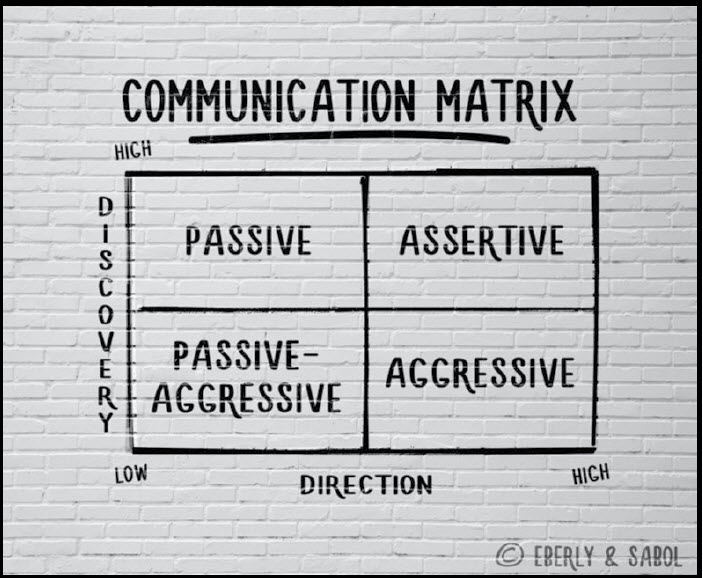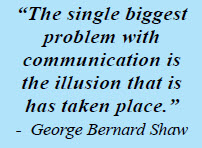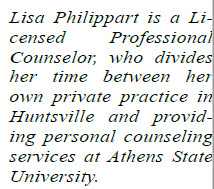Identifying Communication Styles – Mental Health Moment
 By: Lisa Philippart
By: Lisa Philippart
When I am searching for a topic to write about, I often look to what I have most often going on in my sessions. And recently, I have been counseling couples in the understanding of communication styles. In the psychotherapy world, there are many theoretical orientations that define our ability to communicate. One of my favorites looks at connecting to others in terms of four basic styles: passive, aggressive, passive-aggressive, and assertive. I’d like to use my space today to share with you some information about the first three challenging forms of interactions.

Passive communication is a pattern of avoiding expression of true feelings and opinions, and not meeting the communicator’s own needs. Passive individuals often allow grievances or annoyances to build, and then once they reach a high tolerance threshold, they explode in an outburst, usually inappropriate to the incident. And then after the outburst, they feel shame and guilt. Passive communicators tend to fail to assert themselves, even allowing others to infringe on their rights. They have difficulty expressing their feelings, needs, and opinions, and tend to speak softly with poor eye contact and “pulled-in” body posture. A passive communicator may say, “I get stepped on by everyone,” or “People never consider my feelings.” Consequently, passive individuals feel anxious because life seems to be beyond their control, or they feel depressed because things look hopeless, or they feel resentful (often unaware of it) because their needs aren’t being met. You can see how the passive communicators are generally harming themselves.

Aggressive communication is a pattern of expressing feelings and opinions in a way that violates the rights of others. This form of communication is verbally and sometimes even physically abusive. These folks often attempt to dominate others by humiliating, criticizing, blaming, and attacking others. They will speak in a loud, demanding, and overbearing voice to control others. These individuals will interrupt frequently, use “you” statements, and act impulsively. Aggressive communicators will say, “I’m right and you’re wrong,” (think Matilda!) or “You’re not worth anything.” Other statements include: “It’s all your fault.” “You owe me.” “I’m entitled.” Unfortunately, aggressive individuals tend to alienate others or become alienated because their purpose is to generate fear in others. They always blame their victims, instead of taking responsibility for their own issues. You can see how the aggressive communicators tend to harm others.

Passive-aggressive communication is a pattern where individuals appear passive on the surface, but are really acting out in subtle, indirect, or even sneaky ways. Those who develop this type of style often feel powerless or stuck…incapable of dealing directly with their object of resentment. See if you recognize some of these passive-aggressive techniques: muttering to themselves rather than confronting the issue, using sarcasm, using facial expressions that don’t match how they feel, appearing cooperative while purposely doing things to disrupt. Passive-aggressive communicators believe that they are powerless to deal with people head on, so they often use subtle sabotage to get even. Consequently, these individuals become alienated from those around them, or they present with resentment, while real issues are never addressed. You can see how passive-aggressive communicators harm both themselves and others. In my next article, I will share with you the ideal communication style, assertiveness.
By: Lisa Philippart
Licensed Professional Counselor